First impressions count. When you start a job interview one of the first things you will do is shake your prospective employer’s hand. What impression will they get of you by doing this? Handshakes can indicate many things.
The strength of a handshake conveys a lot of information. From a firm to a limp handshake, each intensity communicates pertinent conscious and subconscious clues about your personality. It doesn’t take an expert to interpret these clues either. Anyone can tell you that a limp handshake is not a great first impression.
Handshakes can also symbolize important information. For example, at the conclusion of the Asia-Pacific Economic Co-operation (APEC) summit in mid-November, the importance of handshakes took center stage. From a reluctant handshake between the prime minister of Japan and the Chinese president to the choreographed approach of Barrack Obama, handshakes became an important demonstration of the power of body language.
An article in The Economist describes the significance of both handshakes. In the case of Japan, the handshake between Japan’s Prime Minister Shinzo Abe and Chinese President Xi Jinping signified the triumph of diplomacy over conflict regarding a disputed island ownership between the two countries. Also, the article describes how President Barack Obama’s approach from the left gave him a “defensive position” toward the photographers. They compared his approach across the stage to the Chinese President to a metaphor for Obama’s paying tribute to his host.
Handshakes are a form of body language, and body language is an important part of the interview, too. From your handshake to your shaking hands, your body language is also sending signals for good or ill. Fidgeting, eye contact, the position of your hands above or below the table are all details communicating clues about you to the interviewer. Sometimes without either of you realizing it, as body language often has subconscious interpretation.
Body language is something we talk a lot with our clients about when we consult them on Customer Experience. How your team presents itself to customers can become an extension of your brand. At Beyond Philosophy, we often refer to these as White Coat Moments.
A White Coat Moment is defined as a person’s appearance helps others determine that person’s ability and personality. The name refers to the famous Milgram Studywhere participants administered what they thought were lethal shocks to a fellow participant when prompted by the authority in the “white lab coat.” Grim origins of the term aside, the white coat moment, has evolved to represent the branding moments of an experience. Examples of these moments could be how a Ritz Carlton employee responds with, “My pleasure,” to guests’ requests, or the subconscious reaction we have when we see the blue shirt worn by the Apple Genius at their retail store.
Body language is an important part of these white coat moments, particularly for your Customer Experience. Little things from eye contact to posture can convey signals to the Customer. If you don’t consider the signals sent by body language in your Customer Experience design and related training of your team, these signals might be the wrong ones.
Two organizations that understand this are Apple and Disney. In a past post, we have looked at how Apple trains their employees how to stand and gives them specific language to use when responding to customer objections. At Disney, they also define the white coat moments of their experience in detail as well. Moreover, they assess their employees by their body language. For example, if a Disney employee is caught leaning against the wall rather than standing straight, they will be marked down in the mystery shopping survey.
If we learned anything from the APEC summit last year, it is that there is meaning in everything we see from body language. Even something as benign as a handshake can have implications intended or otherwise. Body language also influences the Customer Experience, intended or otherwise as well.
Every impression you make at an interview counts. Be sure that you consider how your handshake and other body language signals become white coat moments for your interview experience–and make sure that you are sending out the right ones! You never know…you might handshake your way into a better job.
What handshake do you have? Firm, medium, soft or limp?
 “Unlocking the Hidden Customer Experience: Short Stories of Remarkable Practices that Ensure Success”is designed to help organizations take their Customer Experience to the next level. This book focuses on what it takes to evoke the best emotions from your Customer Experience and the vital role of the conscious and subconscious experience with real-world examples. It became available today, for only $9.99!
“Unlocking the Hidden Customer Experience: Short Stories of Remarkable Practices that Ensure Success”is designed to help organizations take their Customer Experience to the next level. This book focuses on what it takes to evoke the best emotions from your Customer Experience and the vital role of the conscious and subconscious experience with real-world examples. It became available today, for only $9.99!
source:https://www.linkedin.com/pulse/you-must-do-your-job-interview-colin-shaw




6 Comments